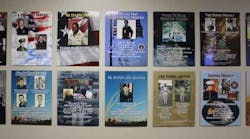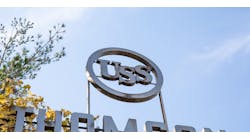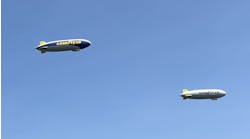Lockheed Martin Missiles and Fire Control, Lufkin Operations: IW Best Plants Profile 2011
Lockheed Martin Missiles & Fire Control: Lufkin Operations
Lufkin, Texas
Employees: 208, nonunion
Total Square Footage: 102,000
Primary Product/Market: missile launcher electronics
Start-Up Date: 1995
Achievements: Reduced major end item deliverable cycle times by up to 38%; 1 lost-day work injury since October 1995; Superior security rating from Defense Security Service, won James S. Cogswell Security Award in 2008
Lining a corridor in the offices of Lockheed Martin's Lufkin plant are posters with photos showing employees and their relatives who served, or are serving, in the military forces of the United States. Among them is a picture of Site Director Keith Johnson's son, a Marine. The photos are a constant reminder that the missile system components being built at the facility are relied on in some of the most deadly areas in the world.
See the other winners of IW's 2011 Best Plants award and find out how they made the top ten.
"There is a personal commitment to quality to make sure we get world-class, high-quality products to our war fighters," says Johnson. "This stuff has to work first time, every time, no exceptions, no cutting corners. Quality is number one."
Lockheed Martin's Lufkin Operations, part of the Missiles & Fire Control division, produces electronics and sub-assemblies for the Patriot Advanced Capability-3 missile, a hit-to-kill interceptor that is its primary product, as well as the Guided Multiple Launch Rocket System (GLMRS) the Army Tactical Missile System (ATACMS) and the Terminal High Altitude Area Defense (THAAD) weapon system.
While the Department of Defense is planning to reduce expenditures, production of the PAC-3 and THAAD systems is ramping up. In fact, Johnson has had to maintain the facility's zeal for quality while overseeing a dramatic expansion. In 2010, manufacturing space was doubled to accommodate a large contract to build the PAC-3 missile systems. Increased production has resulted in a near tripling of the employee population. Every workstation and piece of equipment in the plant was moved.
"We did all that without sacrificing quality or schedule," Keith recalls. "We didn't miss any contract dates. Our defects per standard hour actually went down during that same timeframe."
Keith emphasized communication during the transformation of the plant, hosting frequent all-employee meetings as well as small roundtable meetings where employees could provide their feedback on the changes. He held staff meetings every morning and afternoon for a year to coordinate the expansion.
To obtain the best new employees, Lufkin worked with a temp agency that screened applicants based on their educational abilities. They then went through hand/eye coordination tests (important for the assembly of intricate circuit boards and wiring) and then interviews and background checks. Several weeks of training followed, then job shadowing and finally several months of the on-the-job training where the new recruits were evaluated on their attendance, efficiency and quality of work.
To accommodate the increased production, Lufkin runs two 10-hour shifts four days a week. Lufkin also has developed a work-sharing program with Lockheed Martin's Ocala, Fla. facility (a 2007 Best Plants winner). Using identical equipment and processes, they will produce some of the circuit boards and wiring harnesses and then send them to Lufkin for final assembly.




